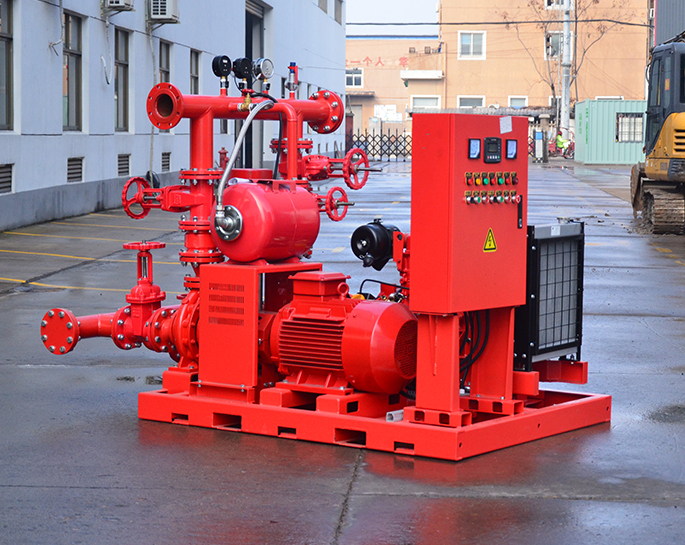What are the different power sources for firefighting pumps?
Apr 23, 2024
Share:
Firefighting pumps can be powered by various sources to ensure reliable operation in different situations. Some common power sources for firefighting pumps include:
1. **Diesel Engines**: Diesel-powered pumps are widely used in firefighting due to their reliability, durability, and ability to provide high-pressure water flow over long distances. They are often mounted on firefighting vehicles or trailers.
2. **Gasoline Engines**: Gasoline-powered pumps are also common, especially in portable firefighting equipment. They are typically smaller and lighter than diesel engines, making them suitable for rapid deployment in remote areas or for smaller-scale firefighting operations.
3. **Electric Motors**: Electric-powered pumps are often used in fixed firefighting systems, such as those installed in buildings or industrial facilities. They rely on a stable electrical power source and are suitable for applications where noise and emissions from combustion engines are a concern.
4. **Hydraulic Systems**: Hydraulic-powered pumps are often used in specialized firefighting equipment, such as hydraulic rescue tools (e.g., Jaws of Life). They are powered by hydraulic fluid under pressure and can provide high force for cutting, spreading, or lifting operations.
5. **PTO (Power Take-Off)**: Some firefighting vehicles, especially larger ones like fire trucks, may use a power take-off system to drive the pump. In this setup, power is derived from the vehicle's engine through a mechanical connection to the pump.
6. **Dual Power Sources**: In some cases, firefighting pumps may be designed to operate using multiple power sources for redundancy or flexibility. For example, a pump may have both diesel and electric motors, allowing it to switch between them based on the availability of fuel or electricity.
The choice of power source depends on factors such as the intended application, availability of fuel or electricity, portability requirements, and the specific needs of the firefighting operation.

1. **Diesel Engines**: Diesel-powered pumps are widely used in firefighting due to their reliability, durability, and ability to provide high-pressure water flow over long distances. They are often mounted on firefighting vehicles or trailers.
2. **Gasoline Engines**: Gasoline-powered pumps are also common, especially in portable firefighting equipment. They are typically smaller and lighter than diesel engines, making them suitable for rapid deployment in remote areas or for smaller-scale firefighting operations.
3. **Electric Motors**: Electric-powered pumps are often used in fixed firefighting systems, such as those installed in buildings or industrial facilities. They rely on a stable electrical power source and are suitable for applications where noise and emissions from combustion engines are a concern.
4. **Hydraulic Systems**: Hydraulic-powered pumps are often used in specialized firefighting equipment, such as hydraulic rescue tools (e.g., Jaws of Life). They are powered by hydraulic fluid under pressure and can provide high force for cutting, spreading, or lifting operations.
5. **PTO (Power Take-Off)**: Some firefighting vehicles, especially larger ones like fire trucks, may use a power take-off system to drive the pump. In this setup, power is derived from the vehicle's engine through a mechanical connection to the pump.
6. **Dual Power Sources**: In some cases, firefighting pumps may be designed to operate using multiple power sources for redundancy or flexibility. For example, a pump may have both diesel and electric motors, allowing it to switch between them based on the availability of fuel or electricity.
The choice of power source depends on factors such as the intended application, availability of fuel or electricity, portability requirements, and the specific needs of the firefighting operation.


.png)
.png)

.png)


